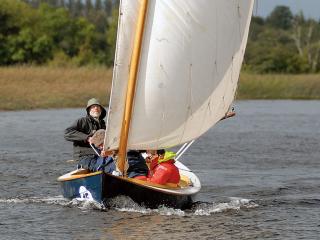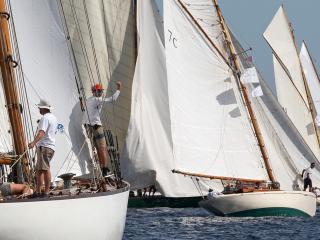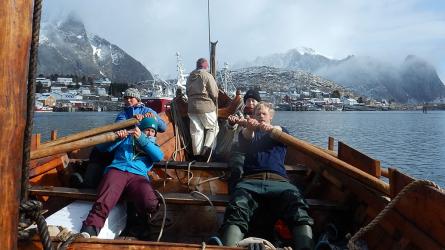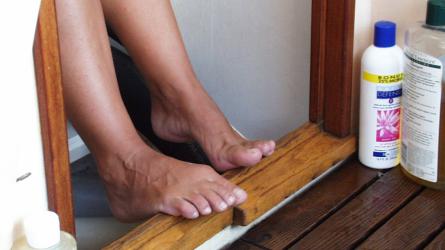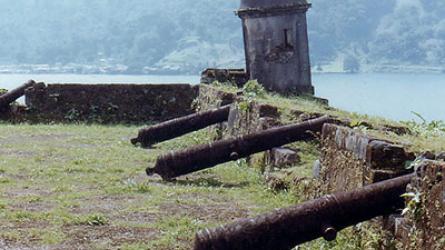May / June 2024
Updating Classic Deck Structures

TALLY HO’s deck structures closely follow the original 1910 configurations but take advantage of some machined fits and epoxy adhesives. The author built the structures for Leo Goolden’s years-long restoration of the Albert Strange–designed yacht, which at the time of this writing was poised to be relaunched in Port Townsend, Washington.
When the virtues of a traditional wooden boat are extolled, we often hear how any part of the boat can be replaced when that part is no longer serviceable. Almost every boat has had some replacement parts; frames, planking, stems, and transoms are commonly renewed as a boat ages. For some boats, these projects happen over a long period of time. For the 1910 yacht TALLY HO, they happened all within a short span of her lifetime.
Leo Goolden, an English sailor and boatbuilder, has been restoring the 48' LOA Albert Strange–designed gaff cutter since 2017 in Sequim and Port Townsend, Washington (see WB No. 267), and documenting the progress in his regular videos (see www.sampsonboat.co.uk and www.youtube.com/SampsonBoatCo). He has many hands working on the project, and he brought me in to replace missing or worn-out companionways and skylights—deck furniture, as the structures are sometimes known collectively. TALLY HO is a flush-deck yacht built as a racer-cruiser (she won the 1927 Fastnet Race), so her expanse of deck has only three deck structures: the main companionway at the cockpit, a foredeck companionway, and a large skylight abaft the mast over the main saloon. All three are minimal and low-profile.
Leo’s restoration has honored the yacht’s legacy by using materials and techniques matching the original where possible and practical. Like almost everything else on the yacht, the original deck furniture pieces were too deteriorated to restore, but they could be replicated with only minor changes. The idea was to give the yacht the same appearance she would have had when launched in England in the early 20th century.
The main companionway was in the best condition of the three principal deck structures. It was badly worn but had not been modified over the years, with the exception of what appeared to be anachronistic portlights. The forward companionway had only minor changes. Unfortunately, the original amidships gabled skylight—certainly the most impressive piece of the three—was lost long ago, possibly around the time the yacht was raised after running aground and sinking in the South Pacific. No one knows what became of the skylight.
The original footprints of all three structures were carefully measured and documented before the deck was removed. Leo and his crew replicated those openings when they built an entirely new deck frame and then planked it with a laid deck of Alaska yellow cedar with teak covering boards and kingplanks. By recording those measurements and examining the removed remains—along with Strange’s original plans and drawings, plus photographs dating from TALLY HO’s early years—we were able to build new deck structures very closely matching the originals.
To read the rest of this article:
Click the button below to log into your Digital Issue Access account.
No digital access? Subscribe or upgrade to a WoodenBoat Digital Subscription and finish reading this article as well as every article we have published for the past 50-years.
ACCESS TO EXPERIENCE
2-for-1 Print & Digital Subscription Offer
For this holiday season, WoodenBoat is offering our best buy one, get one deal ever. Subscribe with a print & digital subscription for $42.95, and we’ll give you a FREE GIFT SUBSCRIPTION to share with someone special.
1 YEAR SUBSCRIPTION (6 ISSUES)
PLUS ACCESS TO MORE THAN 300 DIGITAL BACK ISSUES
PRINT+DIGITAL $42.95
Subscribe
To read articles from previous issues, you can purchase the issue at The WoodenBoat Store link below.
 Purchase this issue from
Purchase this issue from

